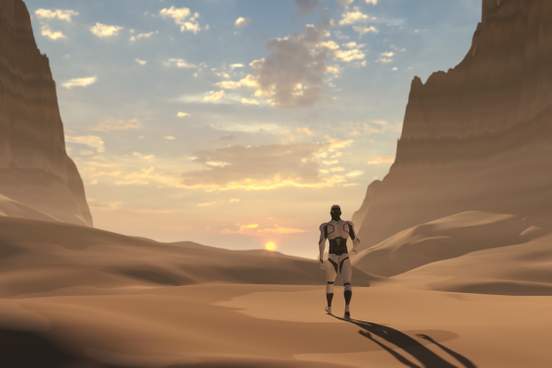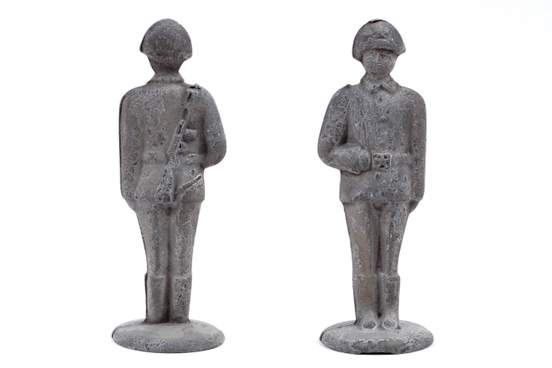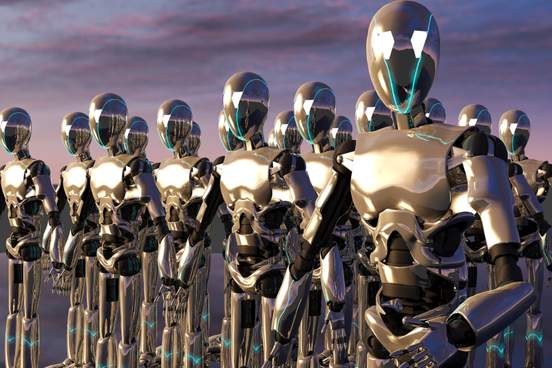
Jedi
Definition: a person who shows extraordinary skill or expertise in a specified field or endeavor
The word Jedi first and foremost refers to the fictional order of mystical warriors who harness the Force—that all-pervasive spiritual essence that holds in balance the forces of good and evil—and battle their way through the Star Wars movies, light sabers flashing impressively along the way. But while the Jedi lived a long time ago in a galaxy far, far away, the word Jedi (also styled lowercase: jedi) lives right here and now as a word referring to a person who is exceptionally skilled at something.
This is opal invisible to the naked eye, detected only by the right technology and well-rehearsed professional. The study, published in The Mountain Geologist, suggests reasons for the Castle Rock mystery taking this long to solve “due in part to the difficulty of studying a conglomerate in thin sections,” it reads. That’s where Longman came in. “A Jedi of the microscope,” Hagadorn called him.
— Seth Boster, The Pikes Peak (Colorado) Courier, 12 Feb. 2024
As for the origins of the word Jedi—and of the Jedi themselves—apparently they’re also of this world, albeit an ocean away from Hollywood:
[George] Lucas did not only source a significant part of his Star Wars’ storyline from [Akira] Kurosawa’s flicks, but also borrowed ideas for the swashbuckling light sabre scenes by Jedis wearing long Japanese Buddhist monk-influenced robes and cloaks. The term “Jedi” itself came from the Japanese “jidai-geki” meaning period drama, while super-nasty Darth Vader’s costume and helmet were inspired by Japanese warlords’ uniform and headwear.
— Peter Lyon, Forbes, 29 June 2016

Sith
Definition: archaic variant of since
Sith, as it refers to a villainous order of Force-wielders in Star Wars (one that counts such figures as Darth Vader among its members), hasn’t yet made the same “hyperjump” to the dictionary as its counterpart, Jedi. That doesn’t mean there’s a dearth (cough) of sith in our pages, however, as the word is an archaic variant of since.
’Twas one of Buffalmacco’s babies you were cackling after, you old goose, and not your husband; but sith it comes to that, give me your hand, Monna, and I’ll try to make you amends.
— George William Featherstonhaugh, The Death of Ugolino: A Tragedy (1830)

Padawan
Definition: a young person especially when regarded as naïve, inexperienced, etc.
The word padawan entered our dictionary in 2023, following in the footsteps of its master jedi two years earlier, as it is sometimes used in a generic way to refer to learners, followers, or anyone just starting out. It debuted in Star Wars: Episode I—The Phantom Menace (1999), the first of the prequels made by George Lucas, and refers to aspiring Jedi knights whose education is overseen by a Jedi master. This master-student relationship is a major part of the plot of the films; in the first films of the series (that is, episodes IV-VI) Obi-Wan Kenobi is shown instructing Luke Skywalker, who is later taught by Yoda.
In Episode I, padawan is used to refer to a younger Obi-Wan Kenobi as he learns a very particular set of skills (the ways of the Force) from Qui-Gon Jinn. In a move that underscores many of the differences between the first trilogy and the prequels, Lucas chose to invent terminology for the newer film whereas he had made a clear effort to use plain language in the originals.
Is it even possible to get good quality smart lights for less? There are ways, young padawan. There are ways.
— Michelle Rae Uy, TechRadar.com, 13 July 2022

Parsec
Definition: a unit of measure for interstellar space that is equal to 3.26 light-years and is the distance to an object having a parallax of one second as seen from points separated by one astronomical unit
The word parsec refers to a measure of distance, not time, but that never stopped the character of Han Solo, whether in Star Wars: A New Hope, Star Wars: The Force Awakens, or Solo: A Star Wars Story, from bragging about his flying prowess—specifically how few parsecs it took him to make “the Kessel run” in his ship, the Millennium Falcon. The first-known use in print of parsec, a mashup of parallax and second, occurred in 1913.
Like us, stars live and breathe. The turbulent motions of matter inside a star generate waves that make its surface throb like a beating heart. Astronomers have now detected the smallest of such vibrations, known as starquakes, from a star called ε Indi situated 3.65 parsecs away.
— Nature, 4 Apr. 2024

Rogue
Definition: a dishonest or worthless person : scoundrel
The Star Wars universe of full of wretched hives of scum and villainy, as observed by elder Jedi Obi-Wan Kenobi in Episode IV referencing the spaceport of Mos Eisley. And where there are such hives there are often, naturally, rogues—rogue being a word used to mean everything from “a vagrant or tramp,” to “a mischievous scamp” to “a dishonest person or scoundrel” (sorry this last one doesn’t rhyme). Lest we get too judgy, however, rogue often carries a sense of “independent” or “maverick” when used as an adjective, and the Star Wars universe is also full of rogue characters who surprise audiences—and even themselves—with their heroism, from Han Solo and Lando Calrissian of the first and third trilogies to Jyn Erso and Cassian Andor of Rogue One.
Till Eulenspiegel is the central character of a Germanic legend that is dated to the 13th century. Till is a happy rascal, a handsome prankster. At the age of 10 he rides behind his father on horseback and moons the villagers as they pass through town, much to the dismay of some and laughter of others. … The word eulenspiegel is a conjunction of the German words for owl and mirror. Clearly, wisdom comes from self-knowledge. We learn about ourselves through the story. One lesson is, there is a thin line between loveable rogue and insufferable scoundrel.
— Rollin Russell, The Citizen Times (Asheville, North Carolina), 24 Mar. 2024

And/or
Definition: —used as a function word to indicate that two words or expressions are to be taken together or individually
Speaking of Cassian Andor, played by actor Diego Luna in the film Rogue One and the television series Andor, there’s no indication that the character’s name was in any way inspired by the conjunction and/or, but a grammarian can dream, right? The first-known use of and/or in print occurred not long, long ago, in a galaxy far, far away, but relatively recently in the mid-19th century, in the Milky Way Galaxy.
Filmmaker George Lucas, the creator of the “Star Wars” franchise, will receive the Honorary Palme d’Or at the closing ceremony of this year’s Cannes Film Festival, according to The Hollywood Reporter. … Films he has produced, written, and/or directed, including the Star Wars and Indiana Jones franchises, have grossed over $6.1 billion worldwide.
— Liam Matthews, GoldDerby.com, 9 Apr. 2024

Acolyte
Definition: one who attends or assists a leader : follower
There are many words for student or follower in English. Most carry the connotation of youth, and some have distinctly academic uses, like pupil, while others are more often used during the period of learning or starting a job, like apprentice or trainee. Intern is used for a pre-professional position, while a more philosophical connection between teacher and learner is evoked with acolyte, a word originally (and still) used for an assistant to clergy during church services. First used in English in the 1300s, by 1800s acolyte had acquired additional meanings, among them “attendant body, satellite” (a meaning used in astronomy) and “attendant insect” (a zoological sense), as well as the general meaning “assistant” or “sidekick.” The word gained prominence in the Star Wars universe with the debut of the television series The Acolyte in 2024.
I’d gone two years in Spring City surrounded by Stars but without one single friend. The Stars of Spring City are not ironical. They do not appreciate sarcasm. When I say something I mean to be clever, they think I’m being snide. I overheard Nadine tell some little acolyte whom I made cry with an offhand remark, “Don’t mind Nymphadora being nasty to you.”
— Kaitlyn Greenidge, We Love You, Charlie Freeman: A Novel (2016)

Droid
Definition: a mobile robot usually with a human form
Although popularized as the classification of such characters as R2-D2 and C-3PO, droid was in use prior to the original Star Wars movie in limited fashion. The earliest known use of the word is from a story by Mari Wolf, in a science fiction magazine from 1952: “They’re stopping robots in the streets—household Robs, commercial Droids, all of them.” (Rob as a shortened form of robot still hasn’t caught on.)
Droid is nothing more than a shortened form of android, which is a word with a surprisingly longer history than most science fiction words. One of the earliest known uses comes from 1657, in a translation of a book by Gabriel Naudé, The History of Magick, which references an Androides (an automaton resembling a human) that was made by Albertus Magnus.
One minute he delivers a scalding jeremiad on the “droids” who run Microsoft and Apple, turning people into “knowledge workers” and computers into “personal productivity tools”; the next, he is carrying on about the dream of an electronic virtual reality in which cyberspace is “given actual human-scale interaction so that you’re not reduced to what you can squeeze through your fingertips with just typing.”
— Craig Bromberg, The New York Times Magazine, 21 Apr. 1991

Bounty hunter
Definition: one who tracks down and captures outlaws for whom a reward is offered
America loves its myths and America loves its movies, and sometimes it’s difficult to tell which came first. In the masterpiece of mythmaking that is Star Wars, George Lucas deliberately summoned up the memory in American culture of pulpy Saturday matinee movies and serials of the 1930s, 40s, and 50s, especially westerns and the early sci-fi hero Flash Gordon.
Tropes from westerns especially abound in Star Wars, like the cynical loner figure of Han Solo, introduced as a “have gun, will travel” mercenary but who becomes a hero in the third act. Another common element in westerns is the character of the menacing bounty hunter. They can be viewed as paid vigilantes who have the authority of the law on their side, but the 1872 legal decision often cited as the ruling that permits this kind of private law enforcement never uses the term bounty hunter or even the term bounty at all—it uses the term bail instead.
When used with the meaning “one who tracks down and captures outlaws for whom a reward is offered,” the term bounty hunter dates only to the early 1950s—about a century after some pistol-packing tough guys were taking the law into their own hands in the Wild West. Elmore Leonard published his novel The Bounty Hunters in 1954, the same year that a western film called The Bounty Hunter was released, the first of many that used the term in the title or to identify characters. Some of these films of the ‘50s and ‘60s featured fading stars of 1930s serials like Randolph Scott and Buster Crabbe (who had played Flash Gordon).
When George Lucas created the mysterious and undeniably cool-looking character of Boba Fett to chase Han Solo in The Empire Strikes Back, he again looked to Hollywood’s version of history as a reference. Indeed, Lucas is said to have based the character on Clint Eastwood’s Man With No Name. The spirit and mystery of Boba Fett lives on in The Mandalorian, featuring a character also tied to the fictional planet Mandalore, wearing similar armor, and working as a bounty hunter. The world of Star Wars gave new life to the Hollywood legend of the bounty hunter, a designation probably chosen because it simply sounds cooler than reward hunter or bail bondsman. More recently, films and TV series featuring real and fictional contemporary bounty hunters have kept the term very much alive in the culture.
In the Old West, when a sheriff could afford to ride only so far from town in pursuit of a criminal, bounty hunters acted as de facto freelance deputies, collecting rewards for bringing back fugitives. Times have changed, but the bounty hunter survives, working now for bail-bond companies eager to capture bail jumpers. True to tradition, local authorities still ask few questions about the methods used in returning a suspect to their jurisdiction.
— Time Magazine, 8 Aug. 1983

Coruscant
Definition: shining or brilliant
In the original Star Wars trilogy, every planet had its theme: Tatooine was a desert planet, Hoth completely covered in ice, and the biome of Endor’s moon (where live the Ewoks) was, shall we say, reminiscent of California’s redwood forests. The prequel trilogy shook things up somewhat—the planet of Naboo seemed to have some variety of ecosystems—but one of the most striking locations was the planet of Coruscant, the entirety of which the character of Ric Olié helpfully explains to a young Anakin Skywalker is “one big city.” As one would expect of a planet covered in skyscrapers, Coruscant as seen from space is mighty shiny, a fact reflected (cough cough) in its name. The word coruscant, which dates to the 15th century, means “glimmering,” “gleaming,” “shining,” and “brilliant.”
I arrived just as he was finishing a daily medical ablution and found myself waiting in his studio, gawping at the new self-portrait in all its coruscant color.
— Wil S. Hylton, The New York Times, 13 July 2016

Carbonite
Definition: a blasting explosive varying greatly in formula but containing among its ingredients a carbonaceous substance (as oak bark), a nitrate, and now usually nitroglycerin
Spoiler alert: At the end of The Empire Strikes Back, loveable rogue Han Solo is “frozen” in “carbonite.” As a reward to the bounty hunter Boba Fett for leading our heroes into a trap, Darth Vader has Solo lowered into a gas-filled chamber and flash-frozen, alive, into a solid rectangular cube of the metallic-looking stuff. In our world, however, carbonite is not used for freezing but for blowing things up, being one of the earliest materials used as an explosive in coal mining. The word carbonite is also used to refer to a natural coke usually resulting from contact of coal deposits with igneous rock intrusions.
The Lime Rock preserve is unique, Gould said, because the high concentration of magnesium and calcium carbonite in the rock makes the earth less acidic than elsewhere in the state, creating a habitat for plants—such as Shaw’s arrowwood, sugar maple and nodding trillium—that thrive only in sweeter soils.
— John C. Castellucci, The Providence (Rhode Island) Journal-Bulletin, 4 May 1998

Clone
Definition: an individual grown from a single somatic cell or cell nucleus and genetically identical to it
“Years ago you served my father in the clone wars.” So said Princess Leia, via hologram message, to Obi-Wan Kenobi in the first Star Wars film in 1977. For years fans were left to wonder what, exactly, the “clone” wars entail until, somehow, cloning returned. In 2002’s Episode II: Attack of the Clones moviegoers finally learned more about what was behind Leia’s allusion, and cloning has been an integral concept in Star Wars storytelling ever since. Cloning is the production of a population of genetically identical cells or of organisms asexually produced by a single cell or organism. Cloning is fundamental to most living things, since the body cells of plants and animals are clones that come from a single fertilized egg. More narrowly, the term refers to an individual organism grown from a single body cell of its parent that is genetically identical to the parent. Cloning has been commonplace in horticulture since ancient times—many varieties of plants are cloned simply by obtaining cuttings of their leaves, stems, or roots and replanting them—though the word clone is a relatively new addition to English, first appearing as a noun at the turn of the 20th century, then used as a verb some decades later. While still carrying its original, scientific senses, the noun clone is now often used generally to refer to a copy or duplicate of something.
Clones of zebra fish—more than 50 different groups of up to 200 genetically identical fish—were produced by University of Oregon biologists.
— Science News, Vol. 120, December 19-26, 1981





